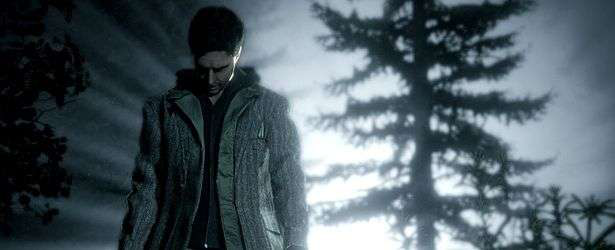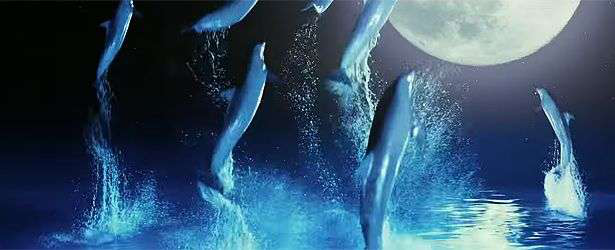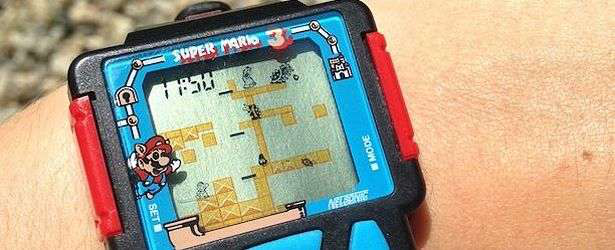Best of 2014 – The Survival of Horror
by Tim
First Published: Jan 30, 2014
Voted For By: Chris, and Lorna
Reason(s) For Vote:
“Just one of Tim’s best, in my opinion. An in-depth and detailed breakdown of some of the best survival horror has to offer and glaring signs as to where the genre lost its way.” – Chris
“This article about what has gone wrong with the ailing survival horror genre is a strong piece. Well written, reasoned, and argued, and with an undeniable passion for its subject, it made even a genre coward like me give a damn.” – Lorna
 For fans of survival horror, there’s nothing more terrifying than to watch our beloved genre lose its personality, tainted by either the misguided notion that more action-oriented gameplay will increase appeal, or simply descend into outright mediocrity. The indie horror scene may be currently thriving with the likes of Amnesia, Slender, and Outlast, but for AAA console games it’s been a different story. What were once seminal survival horror stalwarts have fallen from grace one by one. I mean, the best Silent Hill is a shonky HD up-scale of a twelve-year-old PS2 game, Resident Evil’s latest suffers from flimsy mechanics and an identity crisis, and the most recent Dead Space has all but severed ties to its roots. They’ve become more pedestrian and predictable. Less special. Less scary.
For fans of survival horror, there’s nothing more terrifying than to watch our beloved genre lose its personality, tainted by either the misguided notion that more action-oriented gameplay will increase appeal, or simply descend into outright mediocrity. The indie horror scene may be currently thriving with the likes of Amnesia, Slender, and Outlast, but for AAA console games it’s been a different story. What were once seminal survival horror stalwarts have fallen from grace one by one. I mean, the best Silent Hill is a shonky HD up-scale of a twelve-year-old PS2 game, Resident Evil’s latest suffers from flimsy mechanics and an identity crisis, and the most recent Dead Space has all but severed ties to its roots. They’ve become more pedestrian and predictable. Less special. Less scary.
Both Resident Evil 6 and Dead Space 3 represent everything that’s currently wrong with survival horror, and while you can’t accuse either of being a flop (Resi 6 has managed to shift 5.2 million copies, after all) neither lived up to their publishers’ expectations. Capcom slashed their sales forecasts for Resi 6 twice, and Dead Space 3’s icy reception was at one point rumoured to have led to the series’ cancellation; it’s proof positive that gamers aren’t responding to this new slant on survival horror as the marketers would have you believe. What they can’t seem to grasp is if we want an action game we’ll buy a dedicated action game.
Now, just to throw a contradictory spanner in the works, action and horror can, has, and will continue to co-exist, but it’s a tough balancing act. Take a look at Resident Evil 4 for example, the title that changed all action games forever. Legendary game director Shinji Mikami famously restarted the project mid-way into development a staggering and near unprecedented four times until he got the formula just right, with the first version eventually morphing into Devil May Cry. Leon S. Kennedy’s assignment to rural Spain certainly doesn’t shy away from more shooty-flavoured shenanigans, but it fluently interweaved survival horror elements into the cinematic mix. Careful resource management, a near-endless onslaught of parasite-infected Ganados and being rooted to the spot when taking a shot, along with deliberately clunky but never infuriating controls, proficiently ratcheted up the tension. Plus, your first encounter with the sack-wearing, chainsaw-swinging Dr Salvador and the Chainsaw Sisters will make the hairs on the back of your neck stand on end, and as for those pesky Regenerators… [shudders].
 Want another example? Fusing the FPS and Japanese horror to great effect, Monolith’s F.E.A.R. series took a team of heavily-armed and highly-trained Special Forces soldiers and sequentially slaughtered them at the hands of psycho psychic Alma’s mutant minions. In a way, it subverted expectation by making you the super soldier from the get-go, rather than starting out as an everyday Joe who grows more capable and overcomes the odds to become the hero. Isaac Clarke resorts to industrial tools on his mission to escape the USG Ishimura by the skin of his teeth in Dead Space, but by the time he crash lands on Tau Volantis in the third instalment he’s as accustomed to laying waste to a bunch of Unitologist nutjobs with a machine gun as Nathan Drake would gun down modern-day pirates.
Want another example? Fusing the FPS and Japanese horror to great effect, Monolith’s F.E.A.R. series took a team of heavily-armed and highly-trained Special Forces soldiers and sequentially slaughtered them at the hands of psycho psychic Alma’s mutant minions. In a way, it subverted expectation by making you the super soldier from the get-go, rather than starting out as an everyday Joe who grows more capable and overcomes the odds to become the hero. Isaac Clarke resorts to industrial tools on his mission to escape the USG Ishimura by the skin of his teeth in Dead Space, but by the time he crash lands on Tau Volantis in the third instalment he’s as accustomed to laying waste to a bunch of Unitologist nutjobs with a machine gun as Nathan Drake would gun down modern-day pirates.
The darling of the survival horror genre this last generation, the first two Dead Space entries, were equally as much action and horror in the same way Resi 4 was, and they worked just as brilliantly; a single Necromorph is a viable threat, capable of slicing you in half in a heartbeat if it catches you off-guard, while the excellent sound design propelled an already thick atmosphere to stratospheric heights. The sequel dialled the scale of the set pieces up a fair few notches, which is where complaints started to materialise, but for the record I think Dead Space 2’s carefully orchestrated action was the right way to go for that specific title, but not the franchise as a whole – an Aliens to the first game’s Alien, if you will. It still had the atmosphere, the resource management, the strategic dismemberment, but also high-octane bursts of adrenaline that the original never did; one minute you’re desperately running for your life through an overrun hospital, unarmed due to the straitjacket you’ve been plonked in for three years, and the next you’re dangling upside-down from a derailed train carriage, fending off approaching Necromorphs hungry for your flesh. They might be pockets of action, but they never forget that they’re within the confines of a horror. Where things start to go awry is when that equilibrium is eschewed in favour of all-out action through and through. Want some online co-op, enough weapons and munitions to start a World War and lashings of explosive destruction in your horror? Don’t mind if I don’t, thanks.
The biggest sin against horror over the past few years is co-op. It has absolutely no place in survival horror whatsoever! Left 4 Dead being the exception, the moment you bring a second player into the mix – AI or otherwise – the illusion is shattered and the sense of isolation disappears. How can you embroil yourself in the atmosphere if you’re nattering to your buddy about work, football or other boring stuff? If co-op has to be part of the package, then it needs to be an entirely separate entity. Either build a unique co-op campaign or tweak the main one to account for a second player, which is something that Dead Space 3 just about managed to pull off. If you want to play it with a friend, the option is always there, but if you don’t (and that’s the only way to go if you ask me) it doesn’t penalise you with a thick-as AI companion.
I don’t like to disrespect Resident Evil 5, because it wasn’t bad per se (it just wasn’t a great Resi game), but can you imagine how much better it would be if Sheva didn’t exist? Take another look at those first trailers and you’ll remind yourself why you were so excited in the first place; Chris Redfield, alone, facing hordes of crazies in the blinding and scorching heat of the African sun (a mechanic perhaps rightfully best left on the cutting room floor, in hindsight). It would still essentially be a sub-par Resi 4; you’d still roll your eyes when you entered yet another secret underground facility, and the final boss battle would still jump the shark (punching a boulder, anyone?), but not having an incompetent Sheva waste your ammo and health supplies or having to restart on numerous occasions because she died again would make it more deserving of Capcom’s best-selling-game accolade.
Resi 6 largely cheated around this problem by not having to share a pool of resources with your partner, but while they’re more capable in a fight than Sheva ever was, they’ll still let you down. However, that was the least of Resi 6’s problems. Few games have divided opinion quite like it, so bear in mind this is just my take on it, but by trying to be everything to everyone it lost sight of what it should have been. It was a diluted case of quantity over quality, a mixed bag of four campaigns trying to be a best-of compilation, further let down by unrefined controls and an inability to shock. You can catch glimpses of what it could have been, like Leon trudging through the underground tunnels watching approaching shadows of sprinting zombies home in on him, simultaneously dodging oncoming trains, but it’s one refreshing wave in a sea of average. The true Resi 6 is Resident Evil: Revelations, but by now the franchise is so tarnished and the mythology so convoluted that a full-blown reboot is its only chance of salvation, if you ask me. Plus, it needs to ditch the zombies.
Seriously, no more zombies, please. We’ve had our fill, now it’s time for them to go away. Stick them in gaming’s Room 101 with World War II shooters and motion controls, because they’re so commonplace these days they’ve become a joke. Give us something new, something alien and terrifying. Show us some imagination, even if it’s only a visual makeover (fat, glowy and vomiting zombies don’t count). Dead Space’s Necromorphs are basically the dead reanimated with a few extra slashy bits, and the infected in Naughty Dog’s incredible The Last Of Us are essentially zombies with mushrooms growing from their bonce.
 Better still, why not go one further and dump the hackneyed zombie archetypes altogether, and instead pit us up against nightmarish creatures of a different variety for a change? Gothic, Egyptian, prehistoric – it’s about time we had a new Dino Crisis, don’t you think (let’s pretend Dino Crisis 3 never happened)? There’s a whole bestiary of nasty beings to choose from: werewolves, vampires (and not the soppy Twilight kind either), mummies (remember the Cat Mummies from Tomb Raider?). Exploring a complex of claustrophobic corridors in an ancient pyramid or a medieval castle with nothing but torchlight to guide you, stalked by long-forgotten and supernatural evils all the way through lends itself perfectly to survival horror. Somewhere between Eternal Darkness, Castlevania, and Tomb Raider rests the untapped potential for something genuinely special indeed.
Better still, why not go one further and dump the hackneyed zombie archetypes altogether, and instead pit us up against nightmarish creatures of a different variety for a change? Gothic, Egyptian, prehistoric – it’s about time we had a new Dino Crisis, don’t you think (let’s pretend Dino Crisis 3 never happened)? There’s a whole bestiary of nasty beings to choose from: werewolves, vampires (and not the soppy Twilight kind either), mummies (remember the Cat Mummies from Tomb Raider?). Exploring a complex of claustrophobic corridors in an ancient pyramid or a medieval castle with nothing but torchlight to guide you, stalked by long-forgotten and supernatural evils all the way through lends itself perfectly to survival horror. Somewhere between Eternal Darkness, Castlevania, and Tomb Raider rests the untapped potential for something genuinely special indeed.
Although, while a well-realised setting with a foreboding atmosphere and dark and chilling creatures will go some way to restoring survival horror back to its former glory, if it doesn’t actually attempt to unsettle you then it’s all for nothing. Everyone loves a good jump-scare, but that alone is not enough to carry a whole game, as Dead Space 3 proved all too well. Necromorphs erupted from vents and beneath the snow with such regularity that it was almost a routine. Entering a new area and being able to identify where the threats will come from means the devs haven’t done their job properly. It needs to catch you unaware, or there needs to be a build up to the reveal, slowly teasing and tormenting you with lighting and sound, making you not want to go into that next room. Yet, you have to… deep breath now. You’ve got three bullets, one medkit and a flash grenade – make it count!
There are more subtle methods that can be used to creep you out; remember, fear of the unknown is more powerful than fearing what you do know, and buckets of gore always helps, but can only get you so far. Take Condemned’s department store level; never mind all the loony tramps wanting to bash your brains in with all manner of blunt and sharp objects, because that mannequin just moved. In BioShock there’s a mother talking into a pram, the constant threatening voices whispering from the darkness, and that bit in the steam room. Then there’s the horror of all horrors, the ‘broken neck woman’ in Project Zero II. On paper they may not sound like much, but you’ll never see those mannequins edge closer, you’ll never expect what’s behind you once the steam clears, and you’ll never get used to seeing that disjointed neck.
 Other titles, specifically Eternal Darkness, cleverly break the fourth wall and screw with your own mind to symbolise a character’s depleting sanity (think along the lines of Arkham Asylum’s Scarecrow sections), and then there are those that unnerve with their plot developments. Discovering the truth about James Sunderland (and Pyramid Head for that matter) or getting raped by Alma or guiding the Sprawl’s biggest needle into Isaac Clarke’s eye are moments that make you remember long after the credits have rolled for all the right – and yet so wrong – reasons. It’s difficult for anything to be scary these days in the “cower in the corner” sense, but making a game pleasantly unpleasant is all it needs to be.
Other titles, specifically Eternal Darkness, cleverly break the fourth wall and screw with your own mind to symbolise a character’s depleting sanity (think along the lines of Arkham Asylum’s Scarecrow sections), and then there are those that unnerve with their plot developments. Discovering the truth about James Sunderland (and Pyramid Head for that matter) or getting raped by Alma or guiding the Sprawl’s biggest needle into Isaac Clarke’s eye are moments that make you remember long after the credits have rolled for all the right – and yet so wrong – reasons. It’s difficult for anything to be scary these days in the “cower in the corner” sense, but making a game pleasantly unpleasant is all it needs to be.
I’m no designer or master of terror, but if survival horror is to regain its stripes then ditching co-op, finding an alternative to zombies and (stating the obvious here) actually being scary is vital to its recovery. Overflowing both players’ pockets with ammo and signposting the shocks is largely why the latest Resident Evil and Dead Space didn’t work. Well, that and the regrettable shoehorning of human enemies with guns. Resi needs a reboot, Silent Hill a renovation, and Dead Space a large-scale refresh when they inevitably make a comeback, but that’s some way off yet.
With that in mind then, is there a closer beacon of hope on the AAA survival horror horizon? Shadow of the Eternals, spiritual successor to Eternal Darkness, failed to meet either of its two Kickstarter campaign targets; Supermassive Games’ intriguing but probably pap PS Move title Until Dawn has seemingly gone AWOL; and the title to which the horrorish-looking screenshots belong on Climax Studios’ website (the team behind the superb Silent Hill reimagining, Shattered Memories) is still listed under Unannounced Game.
 At least Guillermo del Toro’s InSane is still in development somewhere, according to the man himself; after dearly departed publisher THQ cancelled the planned trilogy, the rights reverted back to del Toro, who shopped it around the industry and is now back on track at an unspecified developer. Could it be del Toro’s dream partner at Valve? The Pan’s Labyrinth and Hellboy helmer has openly stated his admiration for the studio, and the Half-Life and Portal developer allowed GLaDOS voice actress Ellen McLain to make a sneaky cameo as the homicidal AI in de Toro’s giant robots versus giant monsters blockbuster Pacific Rim. Read into that what you will but, either way, you won’t be seeing it anytime soon.
At least Guillermo del Toro’s InSane is still in development somewhere, according to the man himself; after dearly departed publisher THQ cancelled the planned trilogy, the rights reverted back to del Toro, who shopped it around the industry and is now back on track at an unspecified developer. Could it be del Toro’s dream partner at Valve? The Pan’s Labyrinth and Hellboy helmer has openly stated his admiration for the studio, and the Half-Life and Portal developer allowed GLaDOS voice actress Ellen McLain to make a sneaky cameo as the homicidal AI in de Toro’s giant robots versus giant monsters blockbuster Pacific Rim. Read into that what you will but, either way, you won’t be seeing it anytime soon.
Yet, all hope is not lost. There is one shining light left, closer than anything else, and it’s a big one! Remember Shinji Mikami from earlier? Well, he’s got a new venture coming out called The Evil Within (or Psychobreak as it’s known in Japan) and, unsurprisingly, horror fanatics are clamouring for every tiny scrap of info they can get their blood-stained hands on, and with good reason. Mikami, after all, is the man responsible for creating the survival horror genre with the original Resident Evil back in 1996 and went on to redefine it with Resident Evil 4 nine years later (as already discussed).
The horror maestro’s return to the genre is a huge deal for horror fans, and he himself has publicly declared his disdain towards survival horror’s movement into more action-heavy territory, a movement he perhaps inadvertently set in motion himself. Before it was formally announced with that spooktacular live-action trailer, when it was simply known as Project Zwei, Mikami is quoted as saying “I’ve found my focus and once again I’m striving for pure Survival Horror” before continuing “I am being very hands-on in the development of this game to ensure the quality is there”. Suffice it to say, The Evil Within is making all the right noises, and with a handpicked team at his own studio, Tango Gameworks, plus the backing of Bethesda’s bankers, Mikami is set to rejuvenate the genre once again. If it can have half as much impact on the wider industry as his previous work has then we can all sleep easy at night. Or can we?
Last five articles by Tim
- Future Perfect
- A Thief's Alternative End
- Uncharted 4: A Thief’s End - Review
- Ratchet & Clank - Review
- Gears Of War 4 – Multiplayer Beta Impressions
























There are no comments, yet.
Why don’t you be the first? Come on, you know you want to!